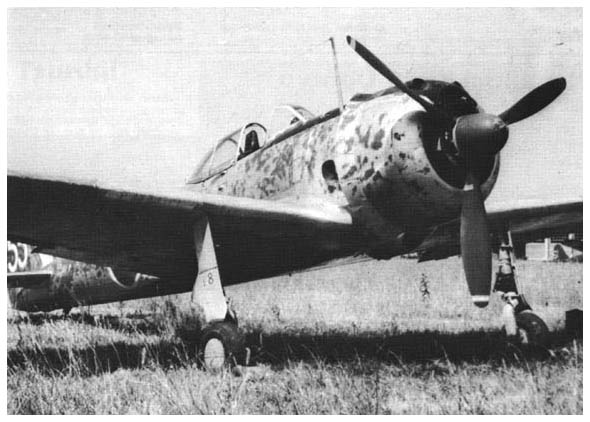Ki-43 Hayabusa (Japan) v Ki-44 Shoki (Japan)
Ki-43

Top Speed: 329mph (530km/h)
Service Ceiling: 36,745ft (11200m)
Rate of Climb: 2,828ft (862m)/minute
Range: 1,094 miles (1,760km)
Armament: 2x 12.7mm (0.50in) MG plus 2x 250kg (551lb) bombs
With an underpowered engine and very light armament, the Hayabusha (Peregrine Falcon) was probably the most dangerously underrated Japanese fighter of the early war period. Outstandingly manoueverable, it attained complete mastery over the Hawker Hurricanes and Brewster Buffalos it faced in Burma. The flip side of this manoueverability was an exceedingly light design, which had very little armour and no self sealing fuel tanks. These limitations were realised and a second version was introduced (the Ki-43-II), which had pilot armour, a reflector gunsight and rudimentary self sealing tanks.
Ki-44

Top Speed: 376mph (706km/h)
Service Ceiling: 36,745ft (11200m)
Rate of Climb: 3,832ft (1,168m)/minute
Range: 1,056miles (1,700km)
Armament: 4x 12.7m (0.50in) MGs
The Ki-44 Shoki (Demon) entered service in 1940, and initially proved unpopular with pilots due to high landing speeds and poor manoueverability. An improved Ki-44-IIa version was introduced after only 40 Ki-44-Is had been produced, which improved these deficencies. The major production version, the Ki-44-IIb, proved fairly succesful as an interceptor, with the vast majority being based in Japan as home defence fighters. The final version, the Ki-44-IIc was armed with either four 20mm cannon or two 40mm cannon and two .50in MGs, and proved extremely effective against Allied bombers in the closing stages of the war.
Probably a very difficult this one, with two fairly unknown fighters. I’m going to leave it over the weekend because I’m away from tomorrow until saturday evening.

 FW-190 for me.
FW-190 for me.




